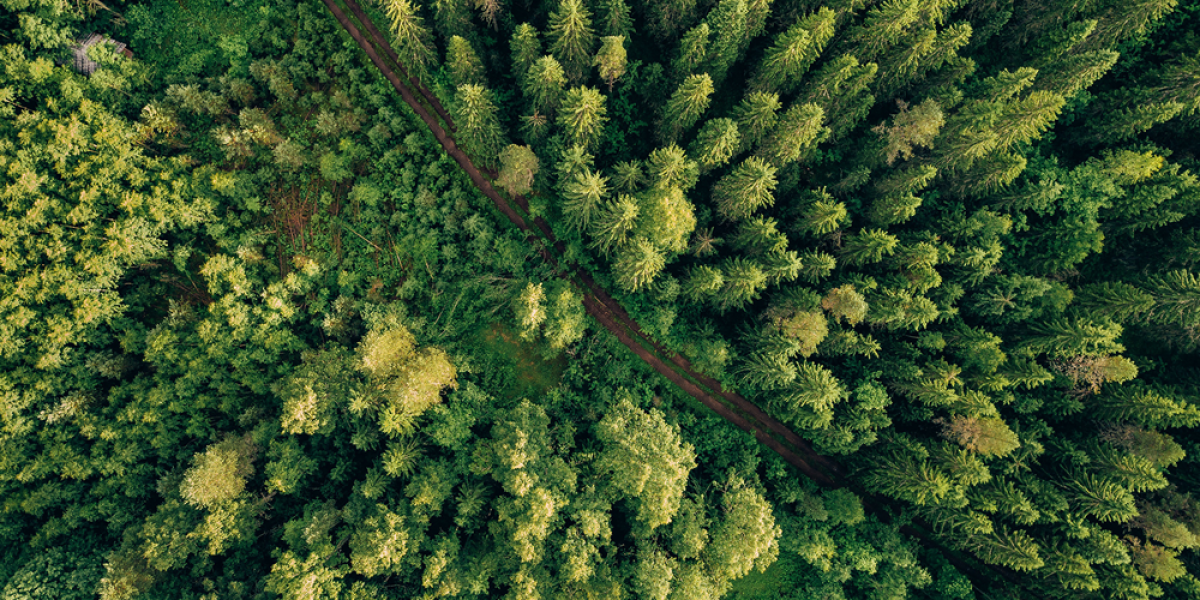
December 17, 2019
By Dave Sawyer and Seton Stiebert
Election 43 saw an escalation in commitments made to plant trees to address dangerous climate change. While this topic has been hotly debated, it seems that there’s promise in planting billions of trees and letting them grow.
In this note for Smart Prosperity Institute, we provide a view of the costs and emission reductions of planting billions of trees as proposed by the Liberal Party of Canada in Election 43. We find the proposed program is likely a cheap source of carbon reductions, is a promising booster of net zero greenhouse gas (GHG) emissions by 2050 and will deliver additional ecological and economic benefits for our kids and their kids’ kids.
We don’t have a lot of detail on where the government plans to plant two billion trees and improve forest management by 2030. We know they have committed $2 billion on a cost-share basis with a broad cross section of government, industry and other stakeholders. But, will it be on public lands primarily? Or will they also seek to plant trees on private land? Will it focus on afforesting lands previously forested? Or will it reforest areas degraded or damaged by fires or pest outbreaks?
Adding to the uncertainty about the amount of carbon sequestered is where the trees are planted, the type of species planted, and the forest management practices implemented. Soil and climatic conditions specific to the land selected for planting and the planting density and tree species selected will all be significant factors as to how much carbon can be sequestered and how quickly.
To estimate the projected carbon sequestered and the cost per tonne of carbon removed of planting 2 billion trees, we adopted the following simplified approach:
Table 1 summarizes our estimates of annual emission reductions and costs related to the 2 billion trees commitment. We provide a range of values to reflect the considerable uncertainty in our analysis.
For starters, there are the multiple stacked ecological and allied economic benefits. Besides the carbon, planting and protecting large swaths of Canada’s forests generates a whole range of ecological benefits, many of which are valued for their own sake, have value in use such as recreational enjoyment or help avoid costs through, for example, floor control. Even Statistics Canada, that radial crowd of bean counters, think natural capital benefits are worth a closer look. In addition to the $2 billion for planting trees, the Liberal commitment sets aside $1 billion for other efforts, including conservation. This investment will also drive ecological and economic benefits and sequester more carbon.
Importantly, there’s a large greenhouse emissions reduction potential sitting in Canada’s natural capital. Canada’s historical GHG inventory provides some insight on this potential. If we set aside natural disturbances such as fires and pests, Canada’s 226 million hectares of managed forests sequesters about 25 megatonnes of CO2e (Mt CO2e) annually. The potential carbon sink on top of this for measures such as improved forest management, increased forest utilization, bioenergy, and reduced harvest for conservation has been estimated at greater than 30 Mt CO2e per year with a cumulative total potential of 1,000 MtCO2e by 2050. The gap to Canada’s 2030 GHG target currently sits at about 80 Mt.
The commitment to plant 2 billion trees looks like a solid start towards net zero GHGs by 2050. We calculate the emission reductions in 2050 from the proposed program to be 6 MtCO2e or 20% of the estimated reduction potential from Canada’s forests. Since trees grow slow and sequester carbon accordingly, the emission reduction potential is about 3 Mt in 2030 or about 4% of Canada’s projected gap to the 2030 GHG target. These estimates are somewhat conservative since we assume a large share of the sequestered carbon, upwards of 30%, will be eventually released through natural disturbances such as fires and pests.
The carbon cost of planting 2 billion trees looks to be a bargain. To determine the cost of the sequestered carbon, we assume a cost sharing rate on top of the $2 billion federal investment of 50% resulting in a total program cost of $4 billion to plant 2 billion trees. Based on this assumption, we estimate the average carbon cost of the proposed program to be in the range of $20 per tonne of CO2e (tCO2e) over the life of the trees. This estimate looks reasonable given other Canadian studies show that reductions of 15 to 20 MtCO2e annually out to 2050 look feasible at costs below $50 per tonne. The cost per tonne looks cheap compared against the 2022 federal carbon price of $50 per tonne of CO2e or the projected costs of closing the 2030 GHG target gap of $100 to $150 per tonne.
Finally, the commitment to plant billions and billions of trees looks feasible. As hewers of wood, it is fair to say that Canada’s forest sector knows something about the science of planting trees and managing forests. And with a history of projects designed to sequester carbon to satisfy regulatory requirements as in British Columbia, we presumably understand something about the economics of tree carbon. Sure, more can be done, and improvements made, but the ability to scale up current efforts bolsters the feasibility of planting 2 billion trees or more.
Figure 1: Planting 2 Billion Trees - Estimates of Annual Emission Reductions and Costs

So, at first blush, Election 43 represents an inflection point in Canada’s pathways to decarbonize and push towards net zero by 2050. Trees and natural capital have been the poor cousin of carbon policy in Canada for too long. It’s time to go all in and get tree planting!
To learn more, check out the webinar Harness the Potential of 2 Billion Trees.